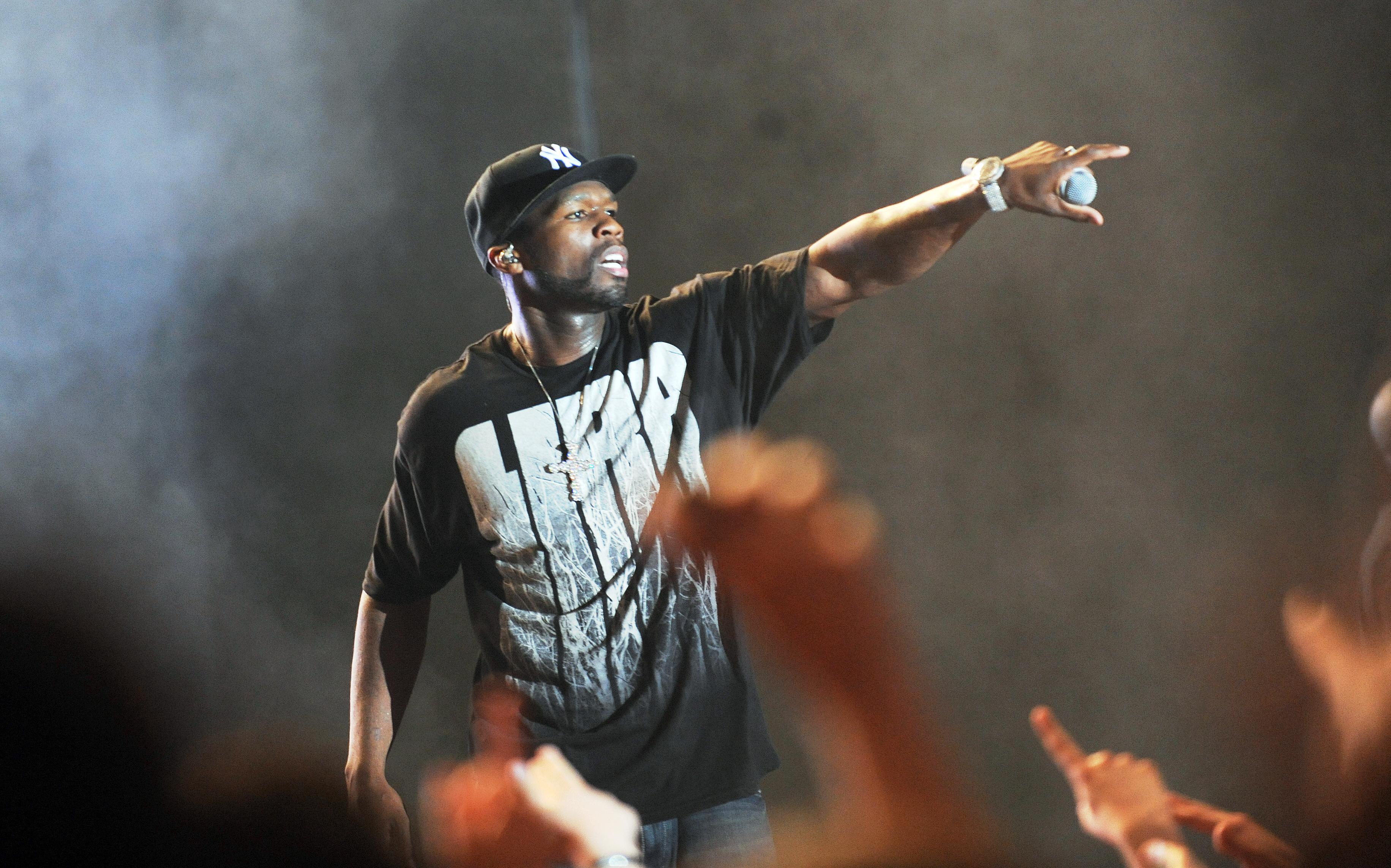Believe it or not, 50 Cent released his fifth album, Animal Ambition, on Tuesday, and plans to release a sixth album, Street King Immortal, later this year. This may come as a shock: 2009’s Before I Self Destruct just barely cleared the half-million mark in sales, and 50 hasn’t charted higher than No. 20 on the Hot 100 since 2007’s “I Get Money.”
Lest we forget, though, there was a time when 50 Cent dominated hip-hop with an astounding string of hits. Born Curtis Jackson, 50 was an up-and-coming rapper out of South Jamaica, Queens when he caught the eye of the late Jam Master Jay, and he was eventually signed to Columbia Records thanks to that affiliation. But a string of violent altercations—including the infamous drive-by shooting in which he survived nine gunshot wounds—and his controversial song “Ghetto Qu’ran” derailed that deal. His debut album, The Power of the Dollar, was never released.
Not discouraged, 50 assembled his rap collective G-Unit—Lloyd Banks, Tony Yayo, Young Buck—and played the mixtape circuit, releasing Guess Who’s Back and 50 Cent Is the Future in 2002. He soon caught the attention of Eminem who, along with Dr. Dre, took Jackson under his wing and signed him to his imprint, Shady Records.
In 2003, he released his first proper album, the groundbreaking and critically acclaimed Get Rich or Die Tryin’, which Rolling Stone named one of the 100 best debut albums of all time. Off the strength of songs like, “In Da Club,” 50 Cent became a household name. That album and its 2005 follow-up, The Massacre, cemented his status as the most talked about rapper in hip-hop—arguably overshadowing his mentor, Eminem.
And, for a time, he was the best diss rapper in the business. From as early as “How to Rob,” his planned but never released first single, 50 has picked a fight with just about everybody in rap, most notably former G-Unit compatriot and mentee, The Game, as well as his Queens rival, Ja Rule. Those feuds fed some of 50’s best diss records.
He lost most of his mojo by attempting to recreate the magic of his first two albums on their successors, Curtis, Before I Self Destruct, and even his most recent effort. They aren’t bad albums, really, but they’re the work of a rapper past his prime with no story left to tell. While 50 once represented the epitome of gangsta rap, the entrepreneurial savvy that now frequently lands him on Forbes lists—“I took quarter water sold it in bottles for two bucks/ Coca-Cola came and bought it for billions, what the fuck?”—eats away at the image he capitalized on in his heyday.
But we shouldn’t let his latter-day mediocrity obscure his former greatness. So whether you only know him for mushy one-liners (“I love you like a fat kid love cake”), infectious hits like “Candy Shop” and “P.I.M.P,” or hardly at all, here’s an introduction to the better-than-you-may-realize work of 50 Cent.
“How to Rob” ft. The Madd Rapper (Power of the Dollar, 1999)
“Many Men (Wish Death)” (Get Rich or Die Tryin’, 2003)
“Wanksta” (Get Rich or Die Tryin’, 2003)
“If I Can’t” (Get Rich or Die Tryin’, 2003)
“What Up Gangsta” (Get Rich or Die Tryin’, 2003)
“Hustler’s Ambition” (Get Rich or Die Tryin’ soundtrack, 2005)
“Best Friend” ft. Olivia (Get Rich or Die Tryin’ soundtrack. 2005)
“This Is 50” (The Massacre, 2005)
“I Get Money” (Curtis, 2007)
“We Up” ft. Kendrick Lamar (Street King Immortal, 2013)
Learn where to start with Aaliyah, Mariah Carey, Frankie Knuckles, and more.
